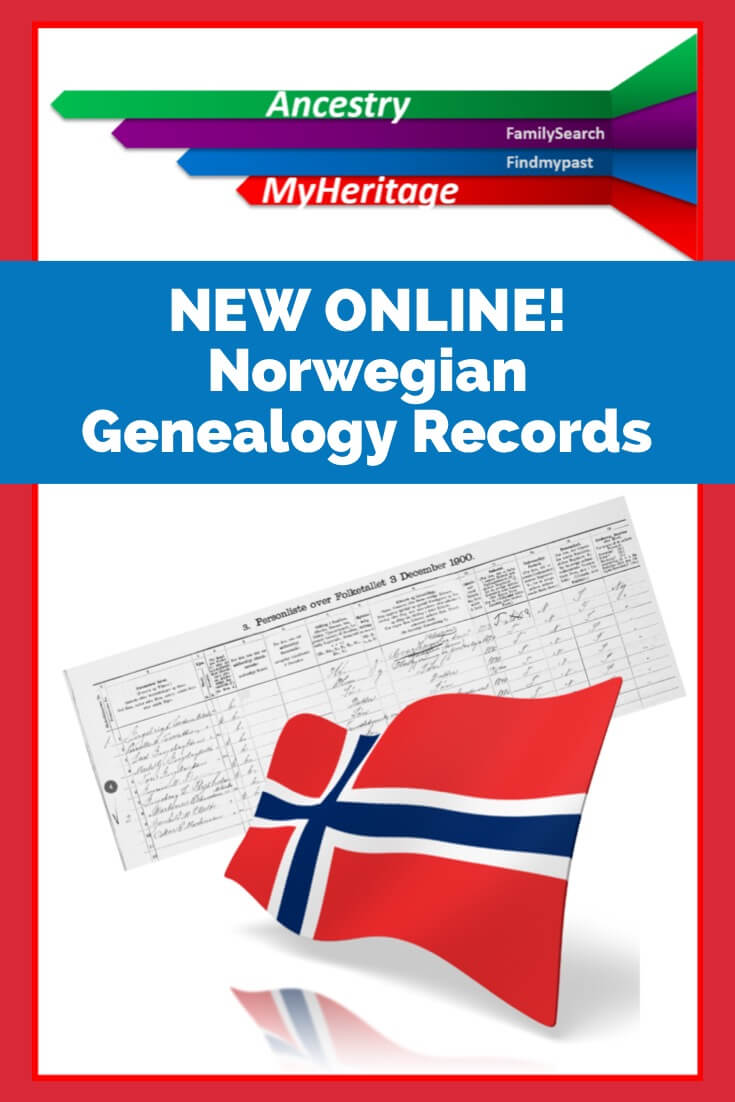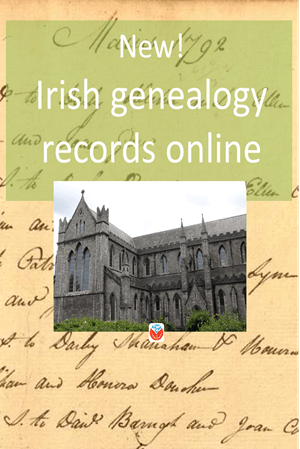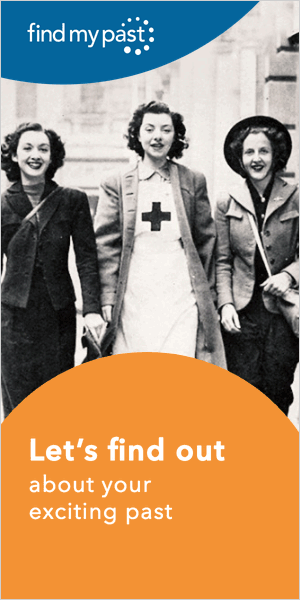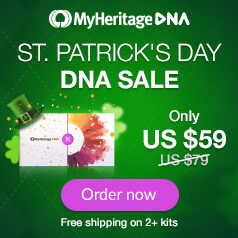Blog

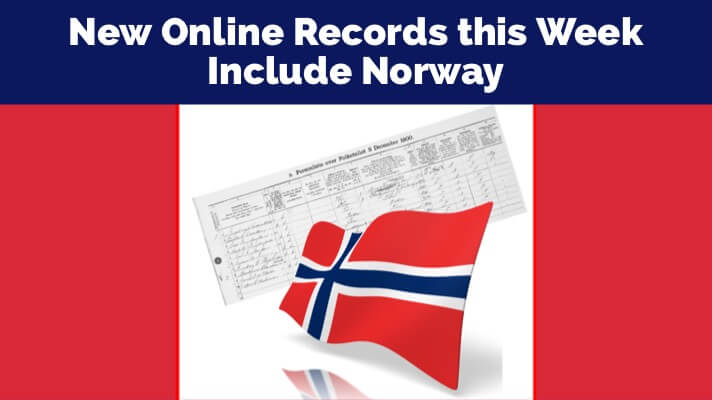
New Genealogy Records Online Include the Norway Census
Genealogy Giants MyHeritage and Ancestry have both added 3 Norway Census collections to their databases, totaling millions of new records. If you have Norwegian origins, these census documents contain valuable details about your ancestors that have been largely unavailable online until now. Then head over to FamilySearch for a massive German records collection now available for free on their website.
Norway Census Records
Both MyHeritage.com and Ancestry.com have recently released millions of new records from nationwide censuses conducted in Norway more than a century ago. It’s a treasure trove of information for anyone with Norwegian heritage.
MyHeritage provided a press release that has great information about these Norwegian records:
“The collections provide robust coverage for Norway’s entire population during a span of two decades and include valuable family history information. While some former Norway censuses were conducted only in select trading centers, these records are more comprehensive. The 6.5 million new records document names, households, dates of birth, marital status, relationships, and residential conditions, making them vital for anyone wishing to explore their Norwegian origins. Their publication marks the first time that Norwegian record collections of such high quality and granularity are available online.
The 1891 and 1900 collections include digital images of the original census documents, while the 1910 collection is an index consisting of transcribed records provided by the National Archives of Norway. The 1900 census was conducted by means that were, at the time, innovative: punch cards, which were then sorted and counted using electric tabulating machines. Of the 2.3 million records in the 1900 collection, 1.9 million records now have digital images of the original documents associated with the census index. Images of the remaining records will likewise be connected to the index in the near future.
Norwegian privacy laws restrict public access to census data for 100 years. Consequently, the 1910 census is the most recent one available to the public. This collection stands out as the first census conducted following the dissolution of Norway’s union with Sweden in 1905. It is also the first Norway census to record full birth dates, rather than only birth years.”
MyHeritage Users: Click here to access the Norwegian Census Collection at MyHeritage.
Ancestry.com Users: Click below to access the Norwegian Census Collections via Ancestry.com:
German Records Online at FamilySearch
The all-free genealogy records site FamilySearch.org has added a huge records collection this week as well for Germany. The Bavaria, Middle Franconia, Brenner Collection of Genealogical Records, 1550-1900 includes over 2.5 million records. This alphabetical collection of family group sheets was compiled from records from 97 parishes in the area and was originally created by Tobias Brenner and others between 1918 and 1945. The records are written in pencil on pre-printed forms in Gothic German handwriting.
Watch Finding German Villages
with James M. Beidler
Learn more about the Genealogy Giants
“Which genealogy records membership website should I use?” It’s one of the most-asked questions in genealogy—and this quick reference guide answers it! The Genealogy Giants guide is the perfect tool to quickly and easily compare all of the most important features of the four biggest international genealogy records membership websites: Ancestry.com, FamilySearch.org, Findmypast.com and MyHeritage.com. Then consult it every time your research budget, needs or goals change. Tables, bulleted lists and graphics make this guide as easy to use as it is informative. Available in both print and digital download.


Lacey Cooke
Lacey has been working with Genealogy Gems since the company’s inception in 2007. Now, as the full-time manager of Genealogy Gems, she creates the free weekly newsletter, writes blogs, coordinates live events, and collaborates on new product development. No stranger to working with dead people, Lacey holds a degree in Forensic Anthropology, and is passionate about criminal justice and investigative techniques. She is the proud dog mom of Renly the corgi.
Disclosure: This article contains affiliate links and Genealogy Gems will be compensated if you make a purchase after clicking on these links (at no additional cost to you). Thank you for supporting Genealogy Gems!
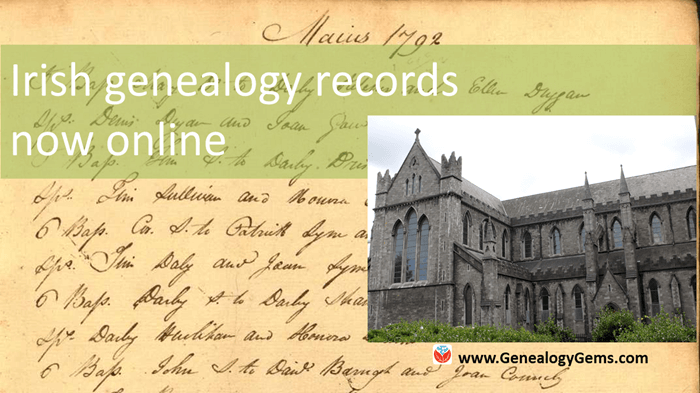
New Genealogy Records for Ireland & Scotland
This Saint Patrick’s Day we’re highlighting new and updated genealogical collections for Ireland and Scotland! You’ll see new and updated records from Ancestry and Findmypast, with particular emphasis on newspaper additions including birth, marriage, and death notices. Plus Findmypast just released their new Irish newspaper archive of transcripts that were compiled by the celebrated Irish genealogist Rosemary ffolliott.
Featured: Irish Records
Genealogy giant subscription website Ancestry.com has a new collection of Cork, Ireland, Marriage Licence Bonds Index, 1623-1750. “The original rolls from which the printed index was created are held in the National Archives of Ireland (formerly the Public Record Office of Ireland). A Marriage Licence Bond was entered into before a Bishop, prior to the granting of the Marriage Licence, with the purpose of ensuring that the impending Marriage was legally sound. Two solvent individuals (one of which was usually the bridegroom) entered into the bond for a stated sum.”
From this collection, you might discover your ancestor’s name, their spouse’s name, and the year and place they were married.
Additionally, Ancestry has updated their collection for the Northern Ireland newspaper, The Belfast Newsletter (Birth, Marriage and Death Notices), 1738-1925. The Belfast News-Letter began publication in 1737 as the Belfast News-Letter and General Advertiser.
This is a fascinating database because it chronicles almost two centuries of Irish history, including the Great Famine, the country’s own political upheavals, and World War I, when the paper printed long lists of death notices after actions such as the famed Ulster Division’s attack during the Battle of the Somme. Genealogically significant items researchers may find in the News-Letter’s pages include, amongst others:
- death or memorial notices
- notices from or about ships or passengers that arrived safely
- people taking out game certificates
- notices from trade groups or guilds
- premiums paid
- notices of executions
- marriages
- births
- lists of sheriffs
- announcements for ships that will be leaving
Irish Newspapers Update
Findmypast just released the Irish Newspaper Transcript Archive, Ffolliott Collection 1756-1850! Search this collection of Irish newspaper transcripts that were compiled by the celebrated Irish genealogist Rosemary Ffolliott. Discover if your Irish ancestors had their birth, marriage or death announcement printed in a newspaper. Each record includes a transcript and original image.
Additionally, Findmypast’s newspaper website, The British Newspaper Archive, has a new Irish newspaper and added additional pages to the following collections:
- Portadown News (new title!)
- Sunday Independent (Dublin)
- Sunday World (Dublin)
- Sunday Life
- Dublin Intelligence, including the addition of historic years (1723-1724)
Scottish Records
Find your Scottish ancestors in Findmypast’s recent additions and updates to their genealogical records for Scotland.
Dundee & Forfarshire (Angus) Hearth Tax 1691 – Use this collection to find out the number of hearths in your ancestor’s home, which can provide you with clues about the family’s wealth and status. In 1690, Parliament granted a tax of 14 shillings on hearths including kilns. Heads of households, landowners, and tenants were liable for the tax, only hospitals and the poor living on charity from the parish were exempt from the tax.
People of Banffshire 1334-1851 – Explore more than 28,000 extracts that taken from original Kirk Session minutes. Responsible for parish business, and the morals of the parishioners, the Kirk Session was the lowest level of a church court and minutes typically contained a detailed account of the parish business.
Newspaper Death Reports – Uncover details surrounding your Scottish ancestor’s death amongst more than 72,000 death notices printed in Scottish newspapers between1807 and 1990. Discover more about your relative’s life, while searching these publications you may be able to find out the date of their death and the names of their parents or spouse.
Renfrewshire, Paisley Poll Tax 1695 – Search these Poll Tax records from 1695. Each record includes a transcript of the original record, the amount of information in each record varies, you may find a combination of your ancestor’s occupation and the name of their employer, spouse or parent.

About the Author: Lacey Cooke
Lacey has been working with Genealogy Gems since the company’s inception in 2007. Now, as the full-time manager of Genealogy Gems, she creates the free weekly newsletter, writes blogs, coordinates live events, and collaborates on new product development. No stranger to working with dead people, Lacey holds a degree in Forensic Anthropology, and is passionate about criminal justice and investigative techniques. She is the proud dog mom of Renly the corgi.
Disclosure: This article contains affiliate links and Genealogy Gems will be compensated if you make a purchase after clicking on these links (at no additional cost to you). Thank you for supporting Genealogy Gems!
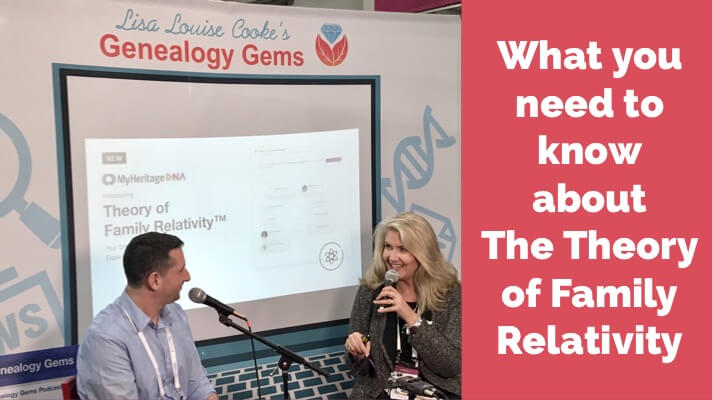
MyHeritage DNA Updates 2019
MyHeritage made some exciting DNA announcements at RootsTech 2019! We’ve got the recap here about all of the new tools that will help genealogists find their ancestors and living relatives: The Theory of Family Relativity™ and AutoClusters. These groundbreaking new premium features will provide solid leads on your genetic matches and their relationships to you, with clear and intuitive displays to help you visualize your data like never before.
The Theory of Family Relativity™
“MyHeritage has recently announced and launched what they’re calling the “holy grail” of genetic genealogy – and I’m inclined to agree! The Theory of Family Relativity™ finally bridges the gap between DNA matches and historical records by providing you with leads that explain the relationship between your matches based on both their DNA database AND their entire collection of family trees and historical records. MyHeritage replicates both the Geni and FamilySearch trees into their “Big Tree,” so the amount of time you’ll save on guesswork and cross-referencing is incalculable. You’ll still want to examine the theories that are presented and practice good genealogical methods to verify the correctness. But for the first time, historical records are now being factored into your match results automatically. Time for the genealogy happy dance!”
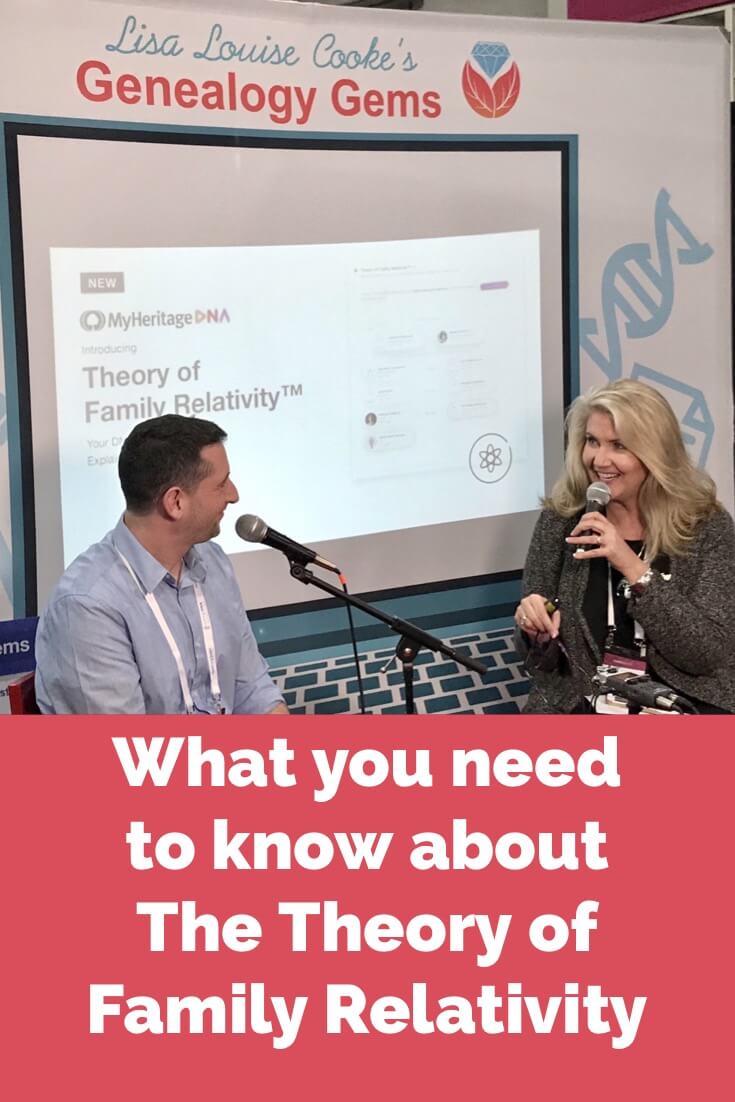
“Through this new feature, we provide you with leads explaining the relationship between your matches based on our entire collection of family trees and historical records, removing the guesswork, and saving you hours of research time. You can then examine the theories and the information associated with them and verify their correctness.
The Theory of Family Relativity™ is based on a big data graph that connects billions of data points drawn from thousands of databases on MyHeritage, in real time. We call it internally the “Big Tree”. Every node on this graph represents a person, and every edge depicts a blood relationship between two individuals that is described in a family tree or a historical record; or a match between two tree profiles that are likely to be the same person; or two records that are likely to be about the same person.”
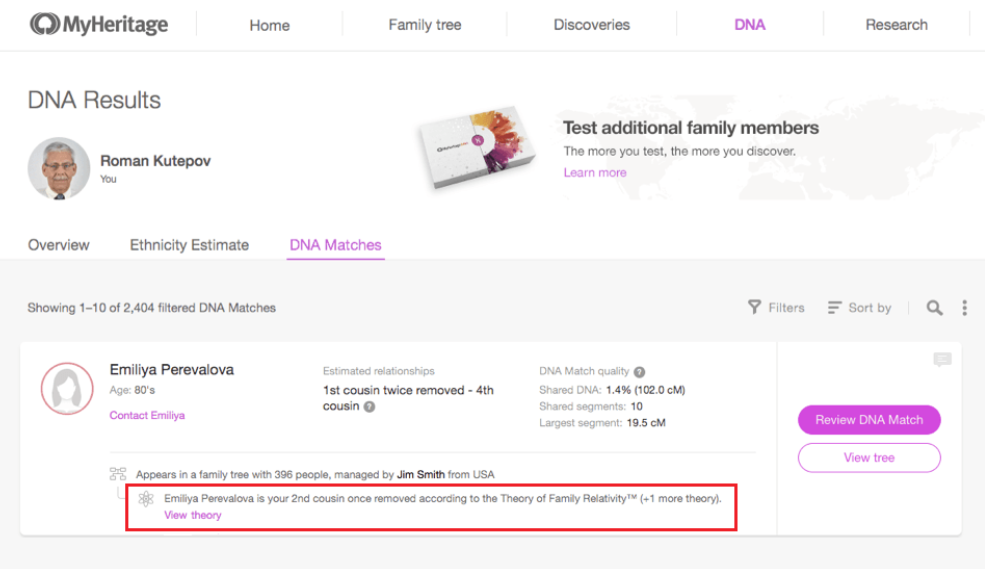
Here are the key takeaways from this new feature:
- The family trees and records used to develop the theory are fully integrated and accessible. From their blog: “Click “View full theory” to see a more detailed view that shows which family trees and historical records were used to establish the theory.”
- You may receive multiple theories about one match, and multiple paths showing how the algorithm came to that theory. Or you may receive none. The bigger your tree is, the better, and as more data is uploaded over time, the more information is available for the algorithm to find these theories.
- These are just theories, similar to hints. You still need to view and verify the sources yourself.
Theory of Family Relativity™ is a premium feature that requires a site subscription on MyHeritage (Premium or PremiumPlus or Complete). Users without a subscription will still see all theories that we found for them, but when they click to see the full theory details, some of the information will be hidden. For full details and explanations of how to access and use this feature, visit the MyHeritage blog.
Autoclusters
From the blog: “We’re excited to introduce AutoClusters — a new genetic genealogy tool that groups together DNA Matches that likely descend from common ancestors in a compelling visual chart. This easy-to-use tool helps you explore your DNA Matches more efficiently in groups rather than as numerous individuals, and gain insights about branches in your family tree.”
One of the limitations of DNA testing for genealogy is that testing companies can often only predict your match’s relationship to you, and genetically speaking, there are a lot of possibilities. For a family historian, estimated relationships can be a good lead, but often cause more frustration than assistance in their research. MyHeritage’s new AutoClusters tool aims to alleviate that frustration and provide helpful insights when a concrete relationship cannot be confirmed.
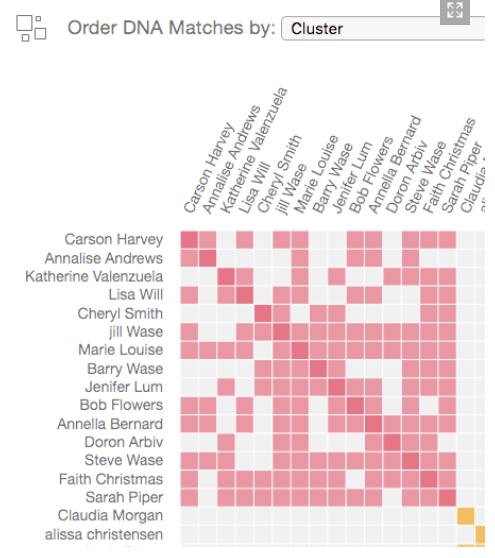
“AutoClusters organizes your MyHeritage DNA Matches into shared match clusters that likely descended from common ancestors. By grouping together DNA Matches who likely belong to the same branch and have a common ancestor, AutoClusters can be very helpful in shedding light on the relationship paths that connect you and your matches. By reviewing family trees of clustered matches, users can piece together the entire branch. Clusters are color-coded for convenience and are presented in a powerful visual chart, as well as in list format.”
AutoClusters is a premium feature that requires a website subscription on MyHeritage (Premium, PremiumPlus or Complete). Learn more about accessing and using the new AutoClusters tool on the MyHeritage Blog.
Get started with MyHeritage DNA today!
You can order a MyHeritage DNA kit right now for just $59 during their St. Patrick’s Day sale! As a bonus, get free shipping when you order 2 or more kits. This sale price is valid through March 18, 2019. If you’ve already tested with another testing company, you can also upload your results to MyHeritage for FREE! You’ll get unlimited free matching as well as the ability to contact your matches. To access these new features and other tools like the ethnicity estimate, shared ancestral places, chromosome browser, etc., it’s a simple one-time charge of $29. Click here to get started with MyHeritage DNA today!
Listen to Genealogy Gems Podcast Episode 227
Featuring the full length interview with Ran Snir, MyHeritage DNA Product Manager
(Click player on the right to unmute sound)

